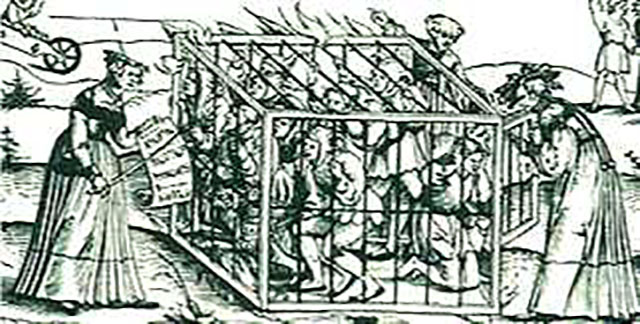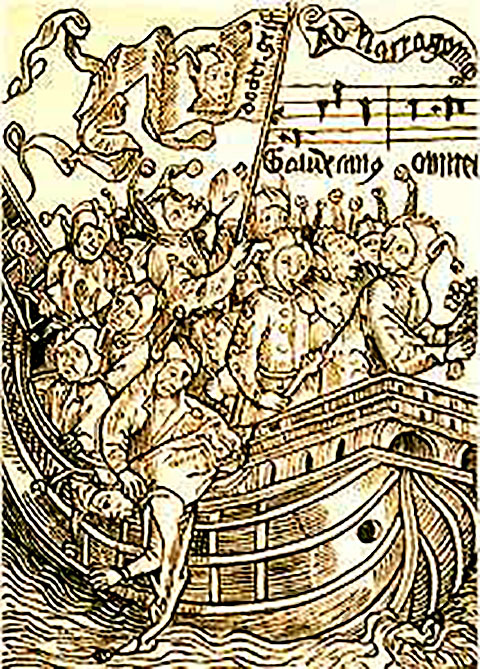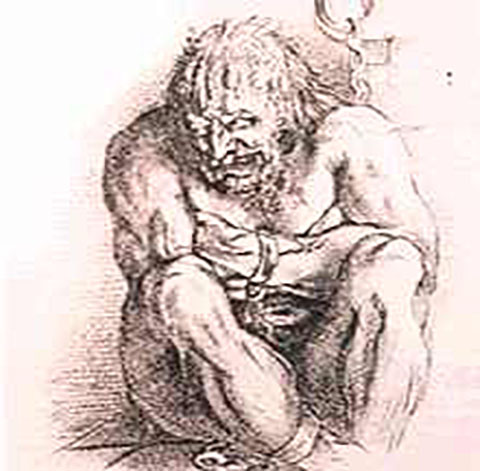The Middle Ages, Renaissance, and Reformation
After the fall of the Roman Empire in the 5th century, Western Europe became politically unstable. A once unified central government under Rome was destroyed. The invasion of Germanic tribes resulted in fragmented smaller kingdoms and trade networks were disrupted. With declines in economic activity, urban centers were no longer sustainable, and rural life became more widespread. Education, science, philosophy, government, and the arts and architecture were no longer valued; and Western Europe entered the "Dark Ages" (or "Middle Ages") (from 500 to about 1500 A.D.)
Following the collapse of Rome, life was hard for almost everyone. For people with disabilities, indifference, neglect, and fear prevailed. As in Roman times, people with physical disabilities, mental illness or intellectual disabilities were characterized as "fools", and employed as court jesters to entertain nobility.
This was also a time dominated by the idea of God, viewed as the active agent in the world who controlled all that happened, including illness, disease, and famine; and who treated everyone by the same rules. The notion that people with disabilities were "Children of the Good Lord" (les enfants du Bon Dieu) was prevalent. That samenotion was reflected in the writings of the Koran , Confucius , and Zoroaster, all of whom considered eople with disabilities as "different".
First Asylum
During the early Middle Ages, the Roman Catholic Church provided refuge to those in need, establishing orphanages, hospitals, and homes for the blind and the aged. In 787 A. D., Datheus, archbishop of Milan, founded the first asylum for abandoned infants. "As soon as the child is exposed at the door of the church," he wrote, "it will be received in the hospital and confined to the care of those who will be paid to look after them." Conditions at such institutions were custodial at best, and most children did not survive.
Leprosariums as Institutions
Leprosy was prevalent in Europe in the Middle Ages. Misunderstandings about the disease and its physical impairments resulted in prejudice, fear, and segregation; people were seen as unclean, hopeless, and untrustworthy, socially isolated, and forced to live in poverty.
As leprosy began to disappear after the Crusades (between 1100 and 1300 A.D.), leprosarium, or leper colonies, were converted to institutions that housed individuals whom society considered deviant: orphans, vagabonds, madmen, incurables, prostitutes, widows, and criminals. These "cities of the damned" had the power of "authority, direction, administration, commerce, police, jurisdiction, correction and punishments," and had at their disposal "stakes, irons, prisons and dungeons." Later, in 1657, two French facilities were established: the Salpetriere, which housed 1,416 women and children; and the Bicetre, which held 1,615 men.
Idiot Cages
During this time, "idiot cages" became common in town centers to "keep people with disabilities out of trouble." They may have served as entertainment for townspeople.

Idiot Cages
The Ship of Fools
Some communities paid sailors to take individuals with disabilities, particularly those considered unproductive and who posed a burden, to distant lands. At ports en route, these "Ships of Fools " charged admission for views of their human cargo. Eventually, the ships would abandon their "passengers" at another port, forcing them to fend for themselves.
The Beginning of Family and Foster Care
The shrine at Gheel, Belgium, founded in 1215 and dedicated to St. Dymphna, patron of those with mental disabilities or nervous disorders, is considered the beginning of family and foster care. People with disabilities were brought here because of the belief that mental illnes or "madness" could be cured at the shrine. The motivation seems to have been mainly religious – "if we take care of these people and treat them as family members, we will be rewarded in the hereafter."
Segregation for Economic Survival
In addition to the belief that individuals with disabilities were "children of God," a strong motivation for segregation was economic survival. Persons with disabilities were likely among the poorest citizens, with few alternatives to begging for their existence.

Ship of Fools
The Renaissance
The Renaissance was an intellectual and cultural movement that began in Italy in the 1300s then spread throughout Northern Europe and marked the transition from the Middle Ages to modern day civilization. This period promoted the rediscovery of classical learning, art and architecture, politics, literature, and science, and the concept of the dignity of man, as depicted in the great works of Michelangelo and Raphael.
Scientists, including Sir Isaac Newton (1642-1727), an English mathematician, physicist, and natural philosopher, were instrumental in gaining a better understanding of nature and the world around them. Leonardo da Vinci (1452-1519), Italian artist, sculptor, and scientist, best known for his masterpieces of art history, also studied anatomy and the functions of the brain.
While religion remained a powerful influence, spiritual matters played a less important role. People were more interested in the arts and sciences, which led to advancements in health care and a better understanding of disabilities.
Disability and Poverty
Between 1563 and 1601, Queen Elizabeth of England prompted Parliament to pass a series of laws to take care of the "poor and disadvantaged." These Elizabethan Poor Laws, as they were called, shifted more responsibility to the government for the care of the poor, which included most persons with disabilities. Basic care was provided for the "unemployable poor", almshouses were established for the aged poor, and workhouses were built for vagrants who refused to work. Conditions in these facilities, however, were grim.

Restraints
